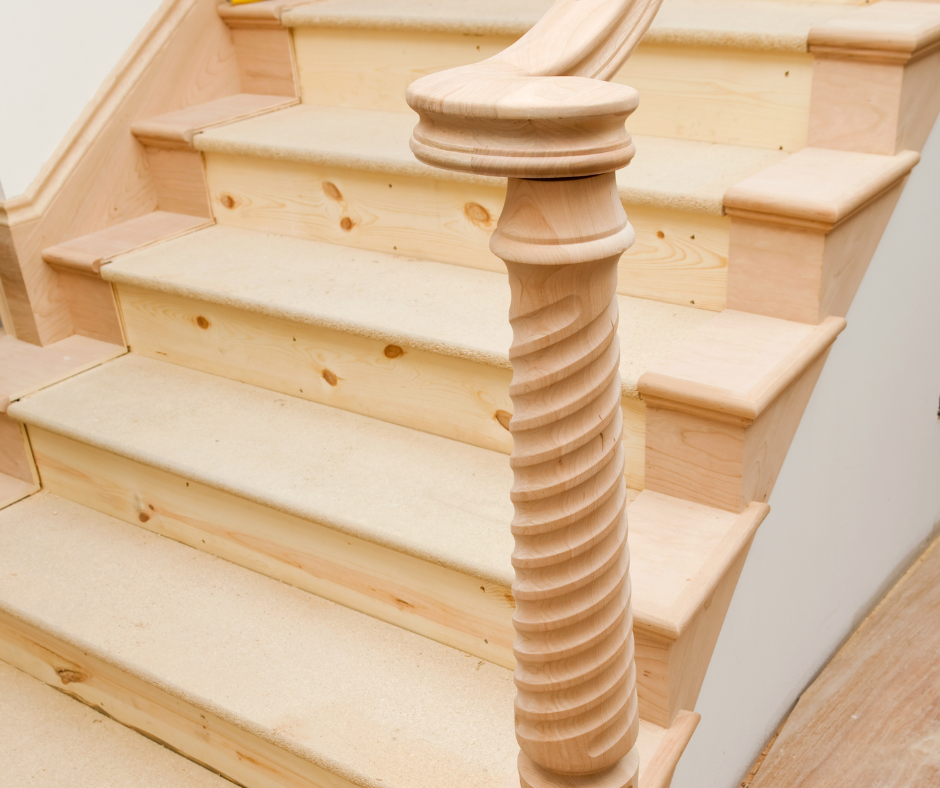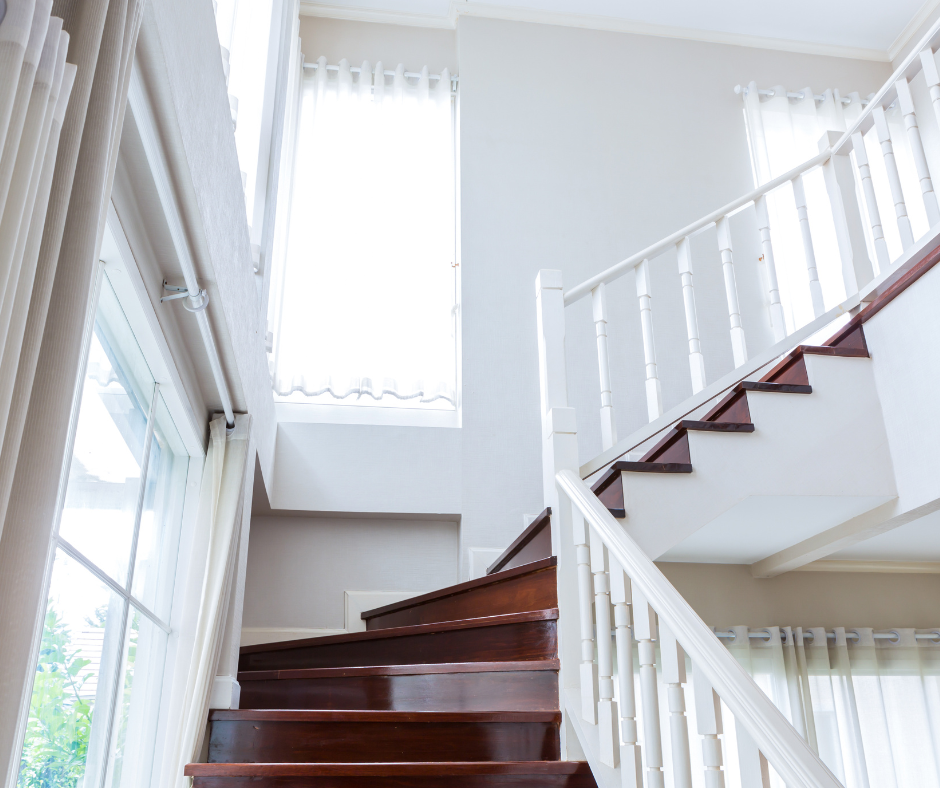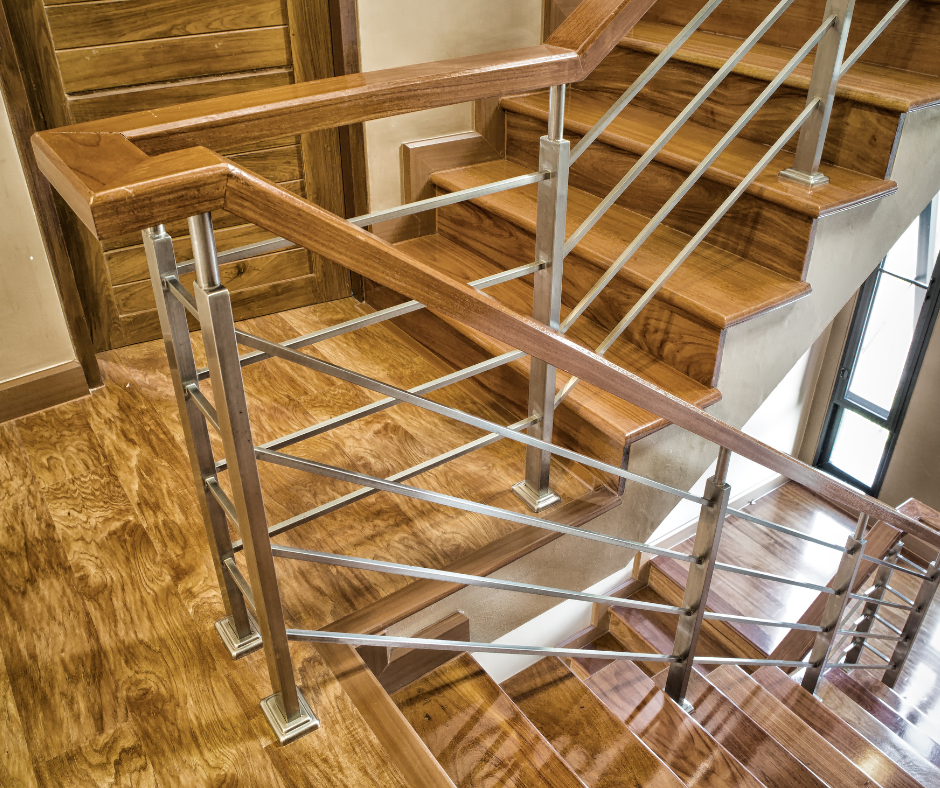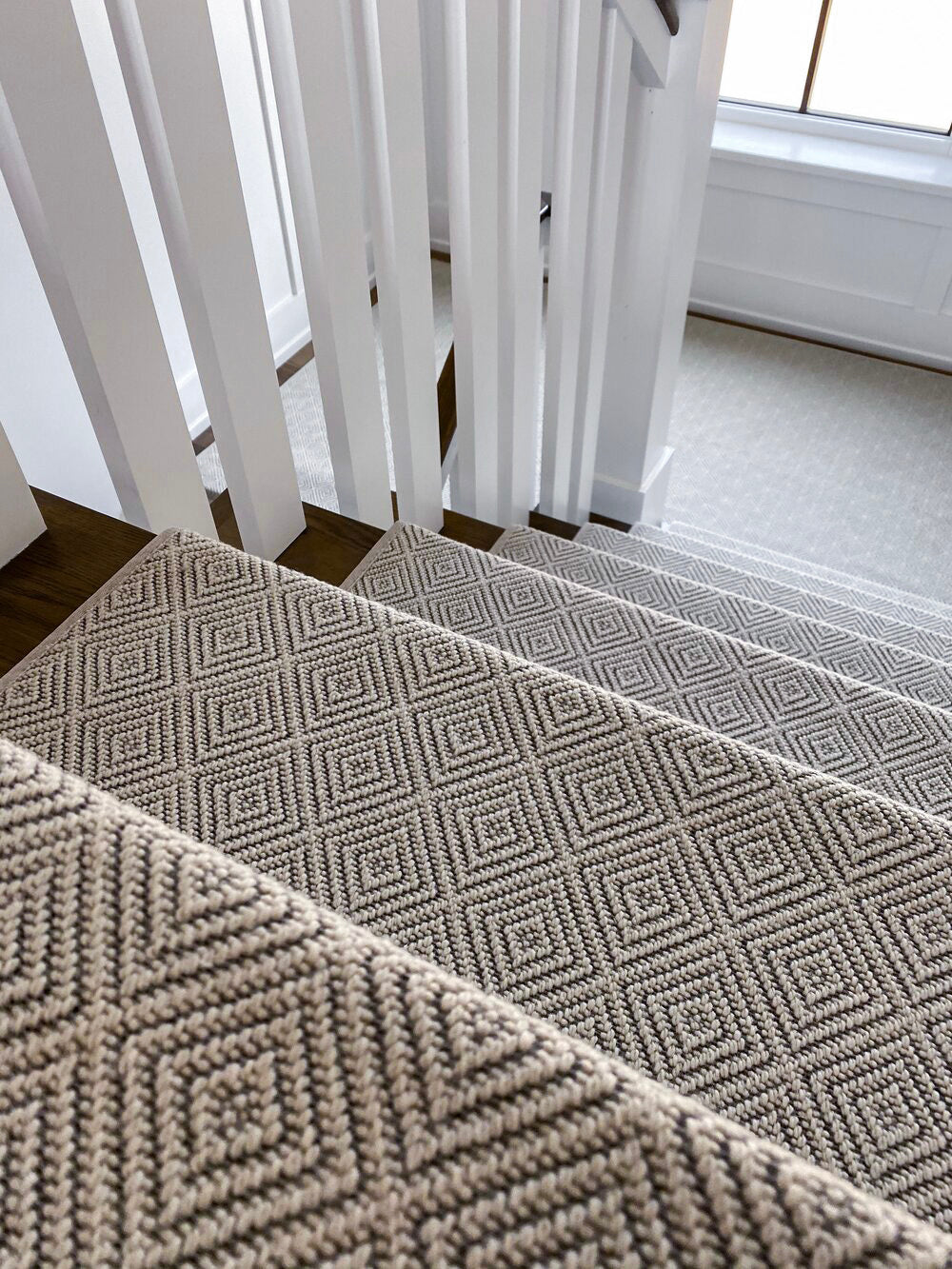Tired of walking up the same old bland staircase every day? Modern newel post designs are decorative and structural posts that anchor your handrail system while transforming the look of your stairs with clean lines, sleek materials, and contemporary details. When paired with carpet stair treads, these posts create a safe, stylish staircase that feels welcoming and complete.
In this guide, you’ll discover how to choose the right modern newel post designs for your home, from size and material to placement. You’ll also learn installation tips to make the process easier and more successful. By the end, you’ll feel confident designing a staircase that looks beautiful and keeps your family safe.
What is the Difference Between Newel and Baluster?
It helps to know the basics before you start shopping. Here’s a quick guide: Knowing this difference will help you communicate clearly with suppliers and installers. It also ensures you pick the right components for both safety codes and visual appeal.
-
Newel Post: The sturdy, often decorative post found at the start, end, or turns of the stairs. It supports the handrail.
-
Baluster: The smaller vertical pieces between the handrail and the steps. These help hold the handrail steady and protect against falls.
Balusters are usually spaced evenly to meet building codes and create a finished look. Newel posts, on the other hand, serve as the main anchors that keep the entire railing structure stable.
Where Should a Newel Post Be Placed?
For a safe, secure staircase, your newel posts need to sit in the right spots. Each placement point carries a specific purpose to maintain balance and safety. Without proper placement, your handrail could become loose over time.
-
At the Bottom of the Stairs: Marks the start and anchors the handrail. This bottom post absorbs much of the pressure from daily use.
-
At the Top of the Stairs: Connects the handrail to the upper floor. It also helps transition from the stairs to the landing seamlessly.
-
At Landings or Turns: Provides extra stability when the staircase changes direction. These posts ensure the railing doesn’t wobble or shift.
Making sure they’re properly installed in these areas keeps your staircase strong for years to come. If you’re unsure, consult your local building codes to confirm spacing and installation requirements.
Parts of a Stair Handrail
Understanding each part of your stair handrail helps you choose materials and styles confidently. Each component works together to create a sturdy and stylish system. Recognizing these parts also makes maintenance and repairs simpler over time.
-
Handrail: The part you grip for support. A comfortable handrail can prevent slips and give peace of mind, especially for kids and seniors.
-
Newel Post: The larger post at the ends or turns. This is often where you can add a decorative touch to match your home’s style.
-
Baluster: The vertical supports between the handrail and the steps. These help prevent falls and meet safety standards.
-
Shoe Rail: The track the balusters sit in at the base. A secure shoe rail keeps balusters evenly spaced and firmly attached.
-
Handrail Termination: The finished end of the handrail, sometimes curved. It creates a polished look and helps avoid sharp edges.
-
Fillet: A thin strip between balusters. Fillets add stability and close gaps for a seamless finish.
-
Handrail Bracket: The piece that attaches the handrail to the wall. These brackets provide extra support and prevent movement.
-
Return: Where the handrail meets the wall. Returns can help give a clean ending and meet code requirements.
Wood and Metal Handrail Styles
Mixing wood and metal is one of the most popular ways to create a modern staircase look. These combinations balance warmth, texture, and clean lines. They also offer a sturdy build that can last for decades with minimal upkeep.
-
Wood Handrail with Metal Balusters: A classic blend of warmth and modern style. This look works especially well in transitional homes.
-
Metal Handrail with Wood Accents: Sleek and contemporary with a touch of tradition. Consider powder-coated finishes to prevent scratches.
-
Mixed Materials: Combine both throughout the handrail and balusters for a unique statement. Mixing materials also allows you to customize colors and finishes.
This approach can fit a variety of interiors, from industrial lofts to modern farmhouses. When choosing finishes, look for options that resist rust and wear for long-lasting beauty.
What is the Difference Between a Newel Base and a Newel Post?
The names sound alike, but each has a specific purpose. Understanding how they work together helps you plan a strong, secure installation. It also prevents confusion when ordering parts or talking with your installer.
-
Newel Base: The bottom part that sits on the floor or stair tread. It holds everything steady and distributes weight evenly.
-
Newel Post: The upright piece that rises from the base and supports the handrail. This is the visible part that adds style to your staircase.
Together, the base and post form the backbone of your railing system. Proper alignment and attachment are essential to avoid shifting or wobbling.
How Big Should a Newel Post Be?
Choosing the right size ensures your staircase looks balanced. Proportion is key—too small and it can look flimsy, too large and it can overwhelm the space. Always measure carefully to make sure your selection fits visually and structurally.
-
Height: Usually between 48 and 60 inches. Taller posts can create a grand look, while shorter ones feel more understated.
-
Width: Ranges from 3 to 6 inches, depending on your space and style. Wider posts often feel more traditional and substantial.
If your staircase is wide or you prefer a bold look, choose thicker posts. For smaller staircases, slim designs can keep the space open and airy.
Choosing the Right Modern Newel Post Design
When it’s time to pick a style, think about the feel you want for your home. Your choice can either make your staircase a standout feature or blend into your existing decor. Don’t be afraid to request samples or view finishes in person before you buy.
-
Sleek Metal Posts: Perfect for an industrial or minimalist design. They look great with floating stairs and cable rail systems.
-
Glass Newel Posts: Great for an airy, modern look. Glass can also help small spaces feel more open.
-
Simple Wood Posts: Ideal for a clean, timeless style. Choose a stain or paint color that ties in with your flooring or trim.
Pairing these with complementary wood and metal handrail options makes your staircase shine. The right combination will look beautiful and meet safety requirements.
Installation Tips for Newel Posts
DIY installation doesn’t have to be overwhelming. With the right tools and preparation, you can get a professional result at home. If you’re unsure, consider hiring a carpenter to ensure everything meets code.
-
Measure Carefully: Accurate measurements save time and prevent headaches. Always double-check before cutting or drilling.
-
Secure the Base: Attach the base firmly to your floor or tread. Use appropriate anchors if you’re installing on concrete or tile.
-
Attach the Post: Use strong screws or brackets to hold everything in place. Make sure the post is perfectly vertical before tightening.
-
Align the Handrail: Make sure the post and handrail meet cleanly. A level and clamps can help keep everything lined up during installation.
Taking your time ensures a safe, polished finish. If possible, have someone assist you for extra support and accuracy.
Steps To Success
Modern newel post designs can completely refresh your staircase. Whether you love sleek metal, elegant glass, or warm wood, updating your posts creates a space that feels safe, stylish, and ready for everyday living. Your family will enjoy the added security and the fresh look for years to come.
Ready to update your staircase with modern newel posts? At Oak Valley Designs, we offer handcrafted stair solutions that are easy to install and beautifully made. From choosing the perfect style to ensuring a secure fit, our team is here to help you every step of the way.
Start Your Staircase Upgrade Today
-
Website: https://oakvalleydesigns.com/
-
Phone: (706) 331-0315
-
Email: info@oakvalleydesigns.com
-
Address: 30 River Ct SW Bldg E Cartersville, Ga 30120




